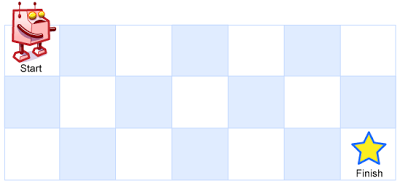Leetcode-62:Unique Paths
Unique Paths
Description
Topics
Companies
There is a robot on an m x n grid. The robot is initially located at the top-left corner (i.e., grid[0][0]). The robot tries to move to the bottom-right corner (i.e., grid[m - 1][n - 1]). The robot can only move either down or right at any point in time.
Given the two integers m and n, return the number of possible unique paths that the robot can take to reach the bottom-right corner.
The test cases are generated so that the answer will be less than or equal to 2 * 109.
Example 1:

Input: m = 3, n = 7
Output: 28Example 2:
Input: m = 3, n = 2
Output: 3
Explanation: From the top-left corner, there are a total of 3 ways to reach the bottom-right corner:
1. Right -> Down -> Down
2. Down -> Down -> Right
3. Down -> Right -> DownConstraints:
1 <= m, n <= 100
Thinking
- Only go right or down.
- Total steps(right & down) count won’t change.
- Combinations? ✅
- How DP works?
Solution
Math (Half)
Wrong Solution
Overflow of Combination
There is a great possibility of overflow for int/long numbers when we act by the Combination formula.
’Casue n! may cause overflow.(Even long type can not solve.)
That’s what I’d done when first try.
class Solution {
public int uniquePaths(int m, int n) {
if (n == 1 || m == 1) {
return 1;
}
int sum = n + m - 2;
return cMultiple(sum, n - 1);
}
public int multiple(int n ) {
int res = 1;
while (n > 0) {
res *= n;
n--;
}
return res;
}
public int cMultiple(int m, int n) {
return multiple(m) / (multiple(n) * multiple(m - n));
}
}Correct Example
We divice the mupltiple and division steps from whole to each single step, both combined one divsion and muptiple action.
So we can avoid overflow exception.
class Solution {
public int uniquePaths(int m, int n) {
long ans = 1;
for (int x = n, y = 1; y < m; ++x, ++y) {
ans = ans * x / y;
}
return (int) ans;
}
}
// Author:力扣官方题解
// Link:https://leetcode.cn/problems/unique-paths/solutions/514311/bu-tong-lu-jing-by-leetcode-solution-hzjf/
Time-Complexity: O(min(m, n)) (Can optimize)
Zone-Complexity: O(1)
Why dividable?
Why it’s alwasys get a Integer by this way?
DP (Copy)

Using DP idea:
F[i][j]: Total possible paths to achieve current point.
F[i][0] = F[0][j] = 1
Cause we can only make right or down action.
class Solution {
public int uniquePaths(int m, int n) {
int[][] f = new int[m][n];
for (int i = 0; i < m; ++i) {
f[i][0] = 1;
}
for (int j = 0; j < n; ++j) {
f[0][j] = 1;
}
for (int i = 1; i < m; ++i) {
for (int j = 1; j < n; ++j) {
f[i][j] = f[i - 1][j] + f[i][j - 1];
}
}
return f[m - 1][n - 1];
}
}